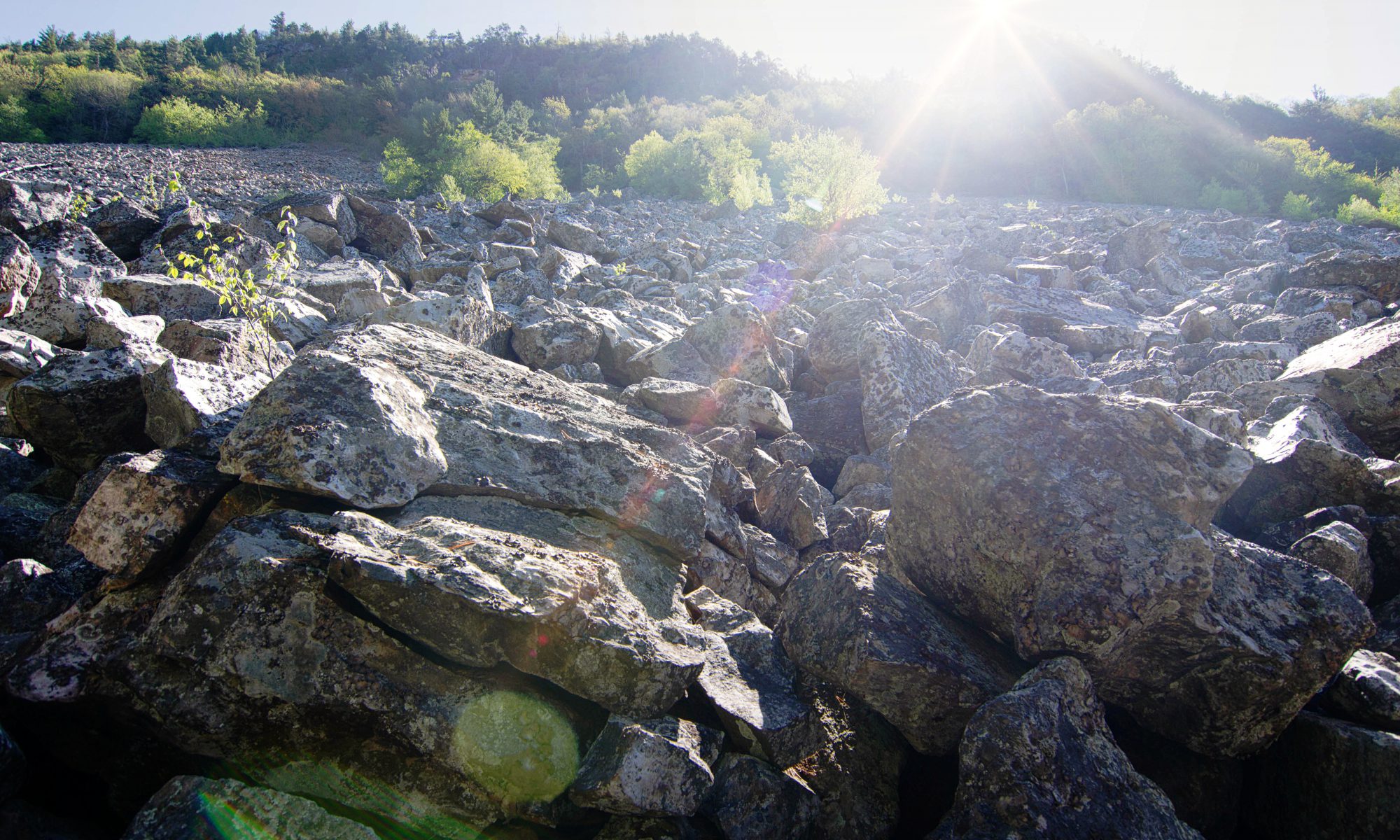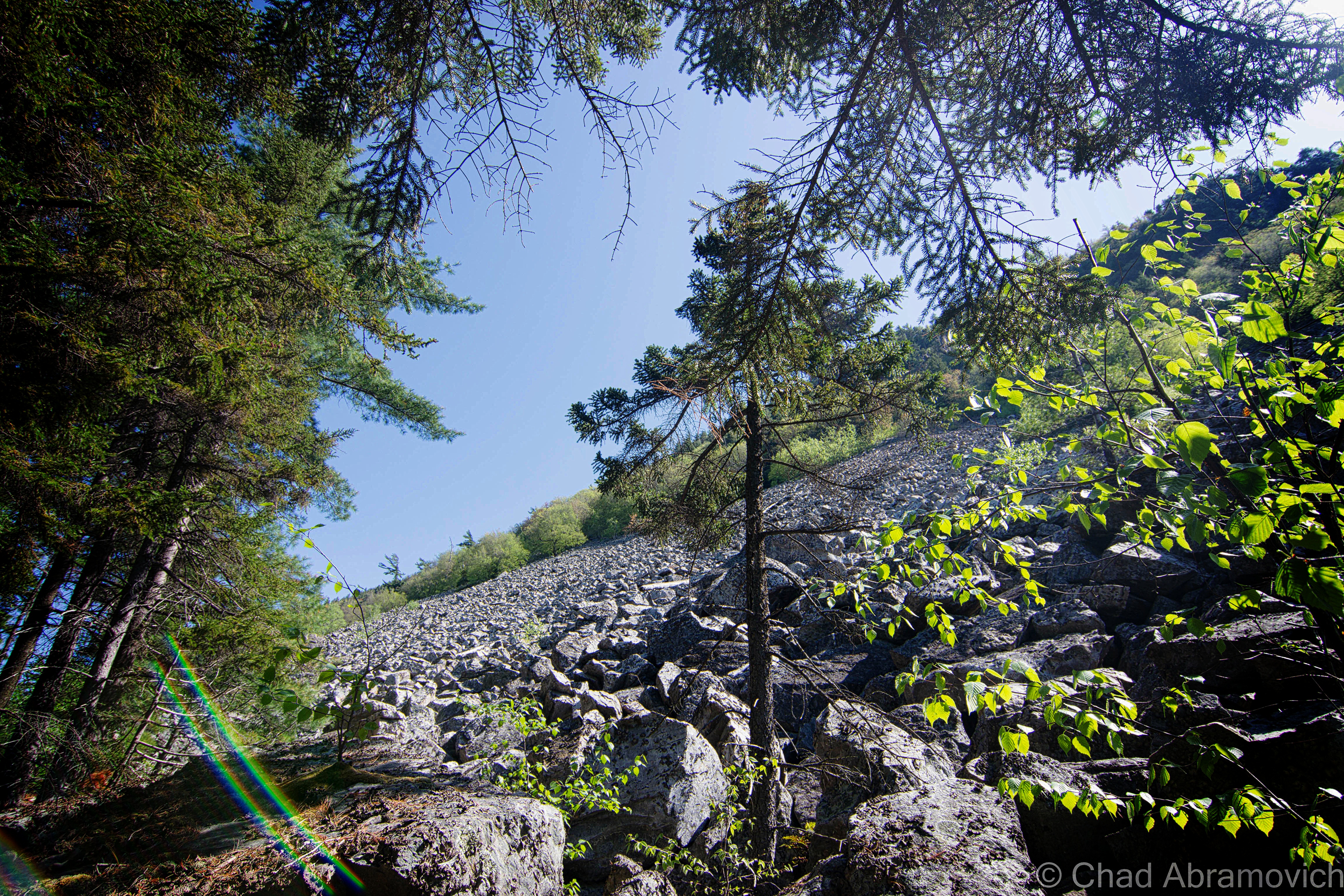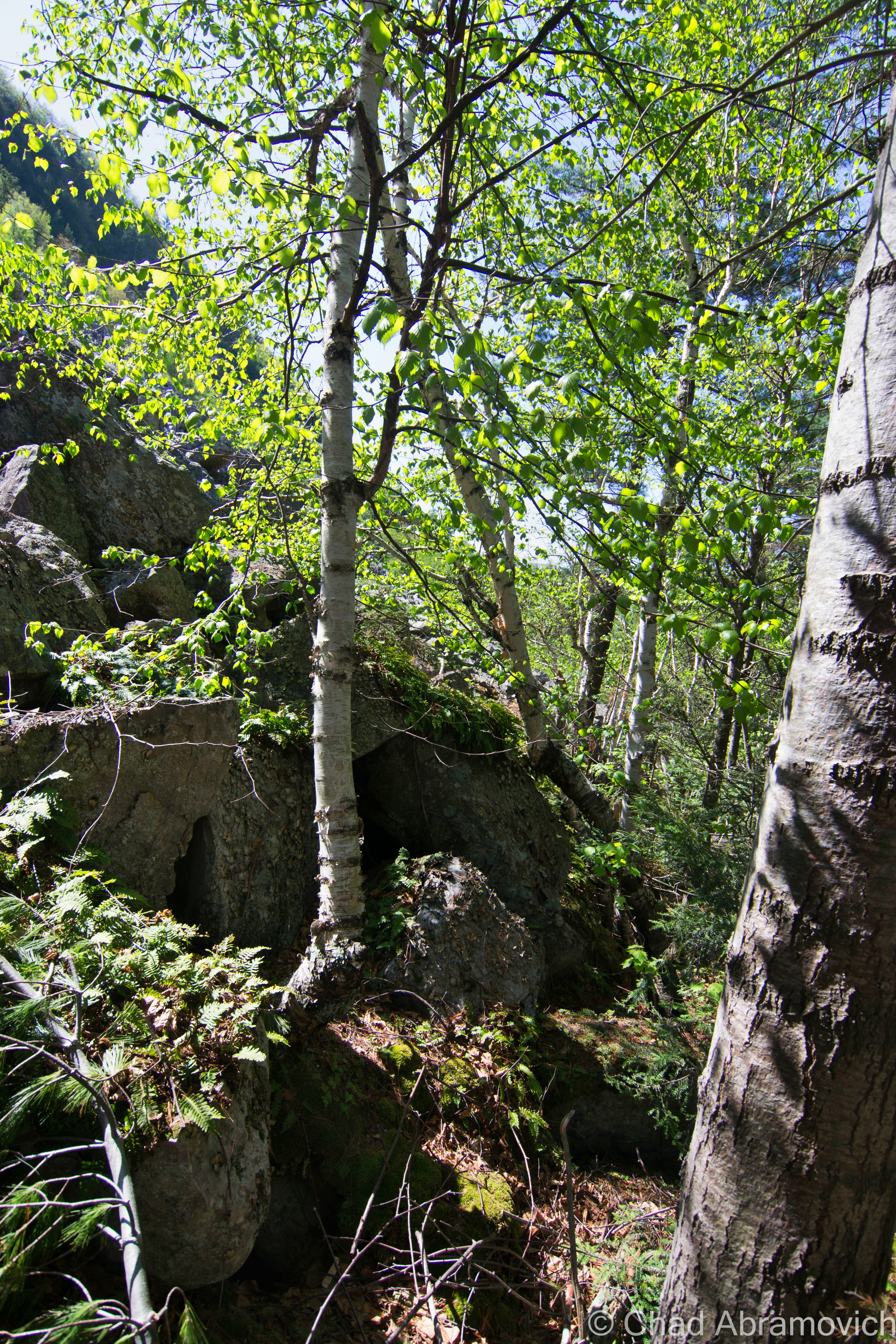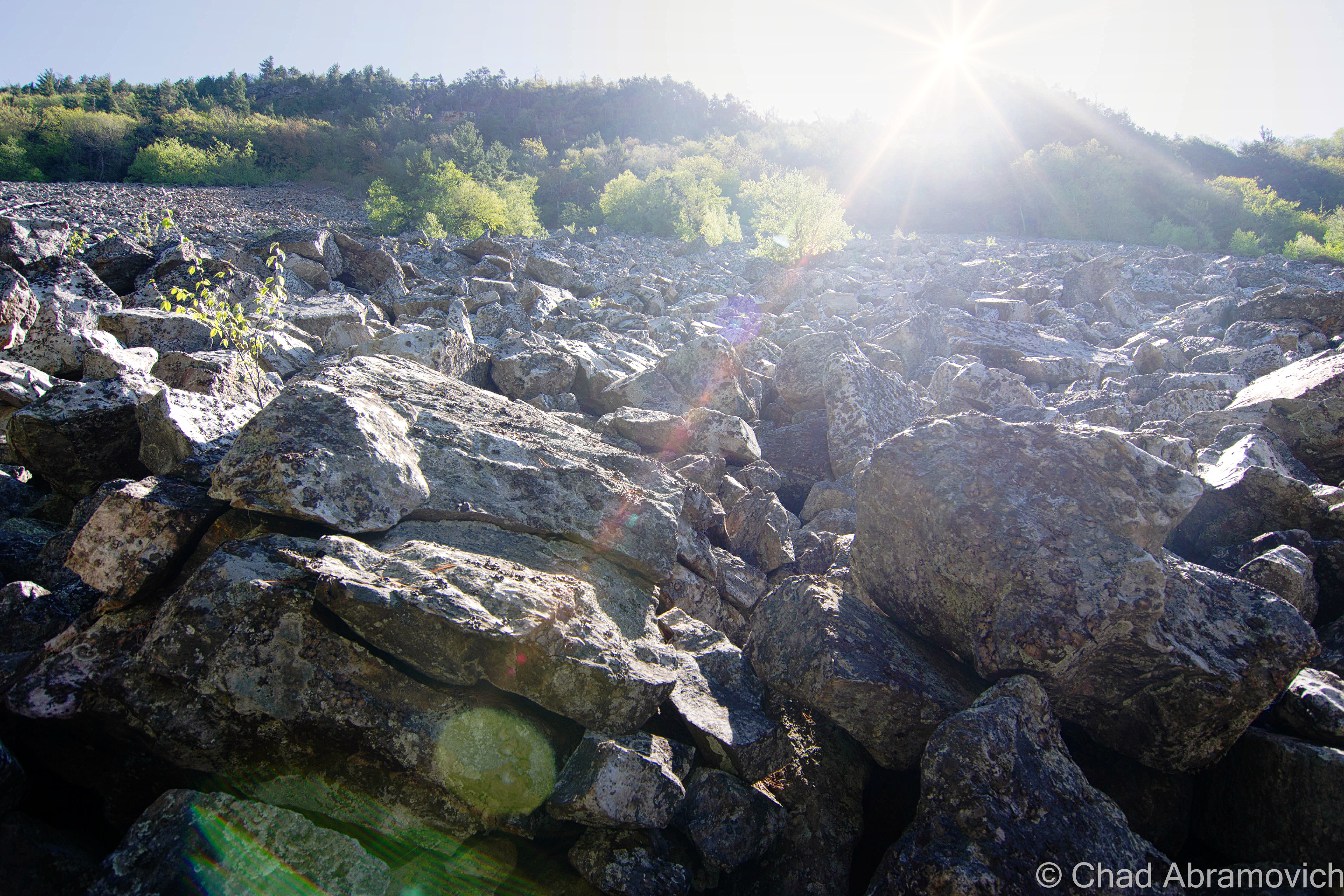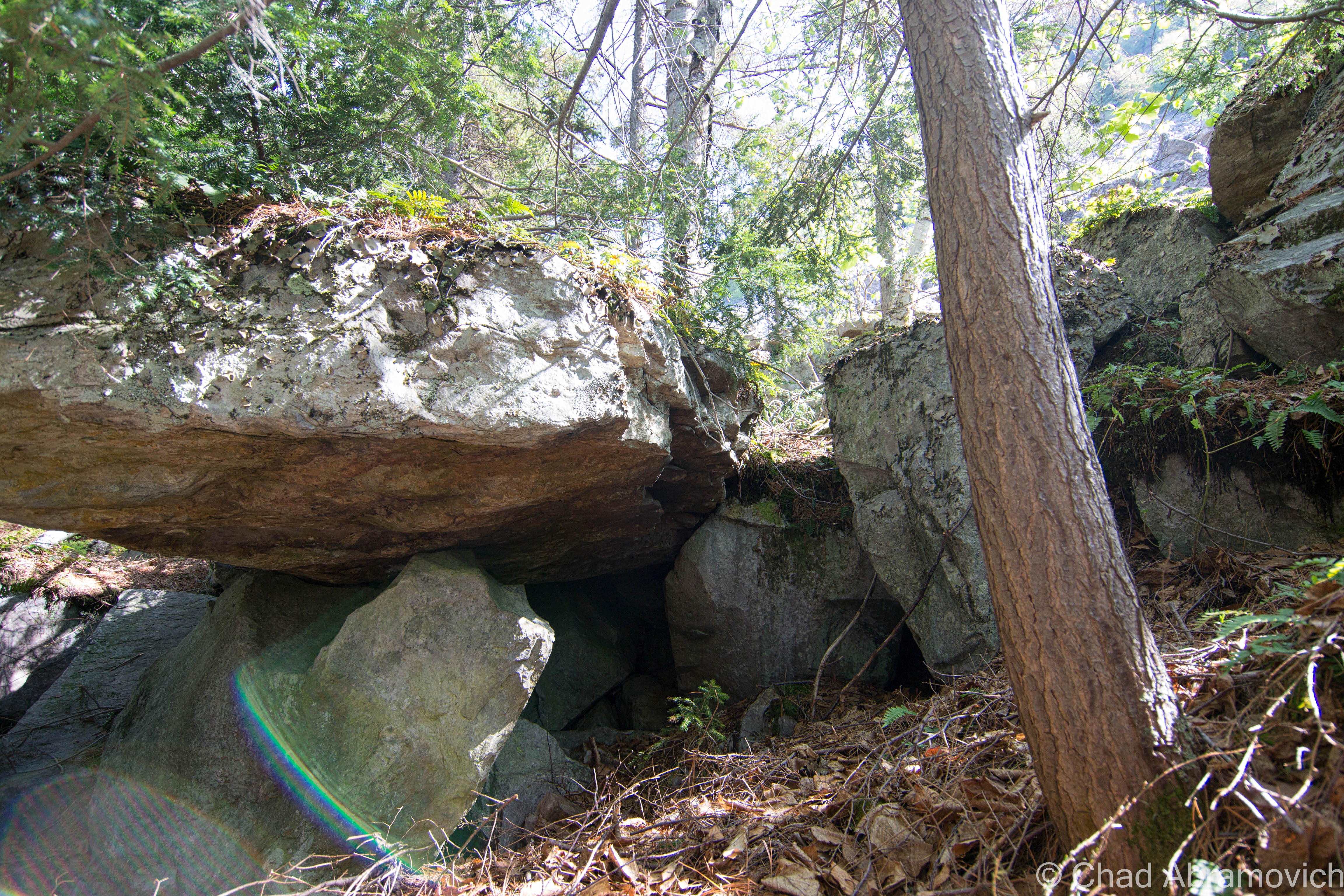I gotta hand it to teenagers, they always seem to find the coolest places to hang out. The Bristol Cliffs will verify that.
I was heading to my old roommate’s parents’ place near Lincoln to help him do a little farm work, and he was pointing out cool terrestrial hangouts he used to haunt when he was a kid. If you’re a Vermonter, chances are, you spent a lot of your youth outside, and Bristol denizens might just have one of the best towns in the state for inspiring geography. That’s also because the entire eastern charted part of the township is cliffs and mountains that are gruelingly steep, which annoyed early settlers quite a bit. Today trends have changed and now it makes for desirable real estate because people want views.
We turned up near Bristol Falls, a hugely popular swimming hole with crowds so thick in the summer that it makes a trip there not worth it at all, at least to me. But the draw is completely understandable, especially viewing the place on an off season day when you’re the only one there.
Hemming in the falls are a set of craggy cliffs that are the side of a 1,825-foot rise known by the Vermont geographical place names board as Deer Leap. Locals just call it Bristol Cliffs, because they’re cliffs, in Bristol.
It’s a win-win for Bristol-ites, because you can admire the eye magnetic precipice from almost any point in town, and also get extraordinarily cool views of Addison County from the top of the to-the-point named ledges if you know which unmarked trail will get you up there. It seems like most area teens do.
Local lore spins a yarn about Abenaki hunting parties chasing deer to the cliff sides and running them off the edges, where more hunters waited at the bottom to collect the carcasses.
But there is another tale that may offer an explanation, and it seems like sort of an archetypal tale that many small towns across America have in their own particular cast.
In the vague timeline of the 1800s or early 1900s, 2 love struck teens decided to commit suicide here by jumping because their families forbade them from being together, for reasons that never made it into the story. The guy held the girl’s hand, and allegedly said “Ok, dear. Leap!”. But that much of a precise detail would have had to involve a witness, and to my knowledge, none have ever came forward. I think that would make it into conversation at some point.
Today, the almost grueling hike gives you terrific views of Bristol village and Addison County and a sweat soaked shirt. It’s also a Peregrine Falcon nesting area, which can dive bomb at speeds of 200 mph.
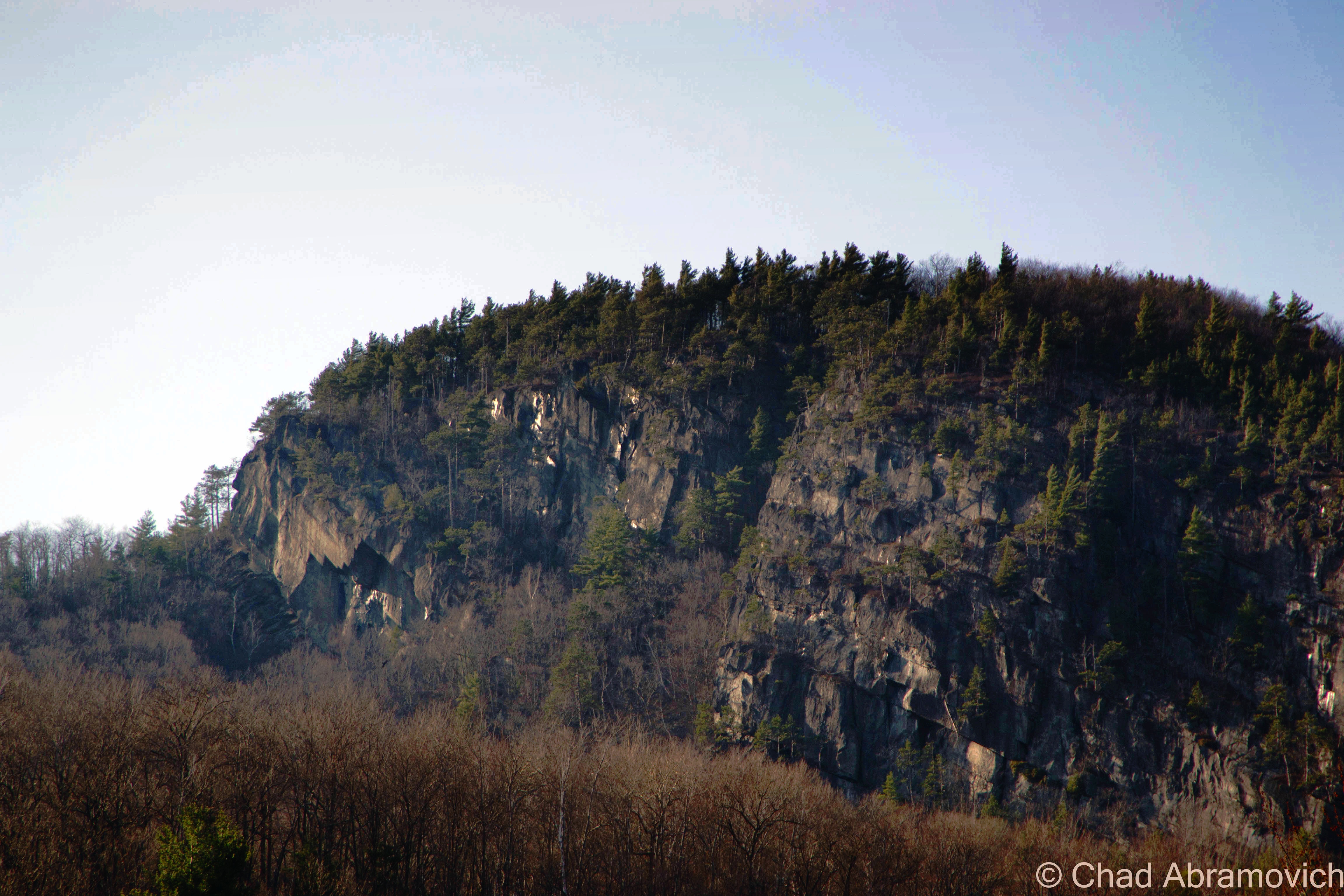
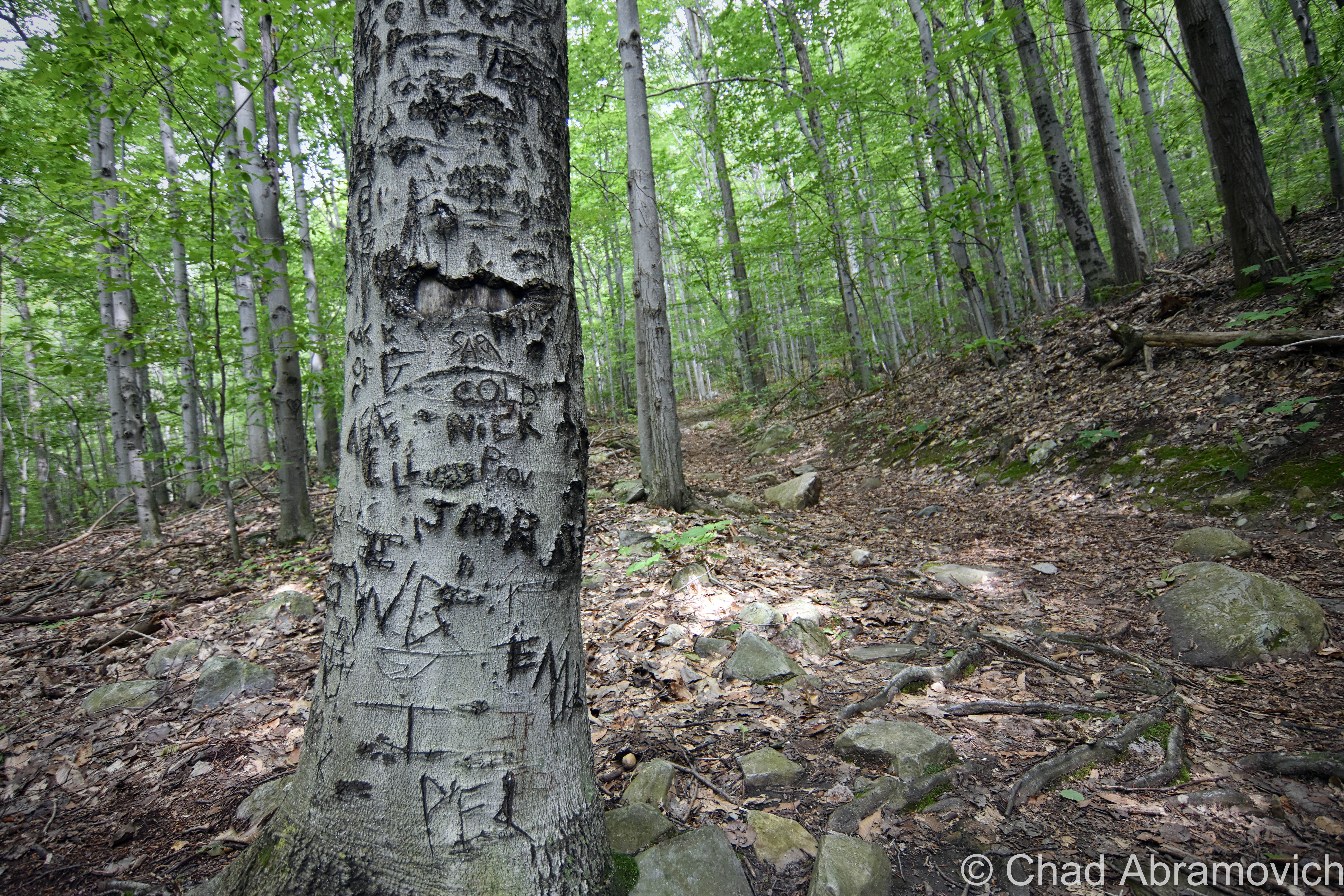
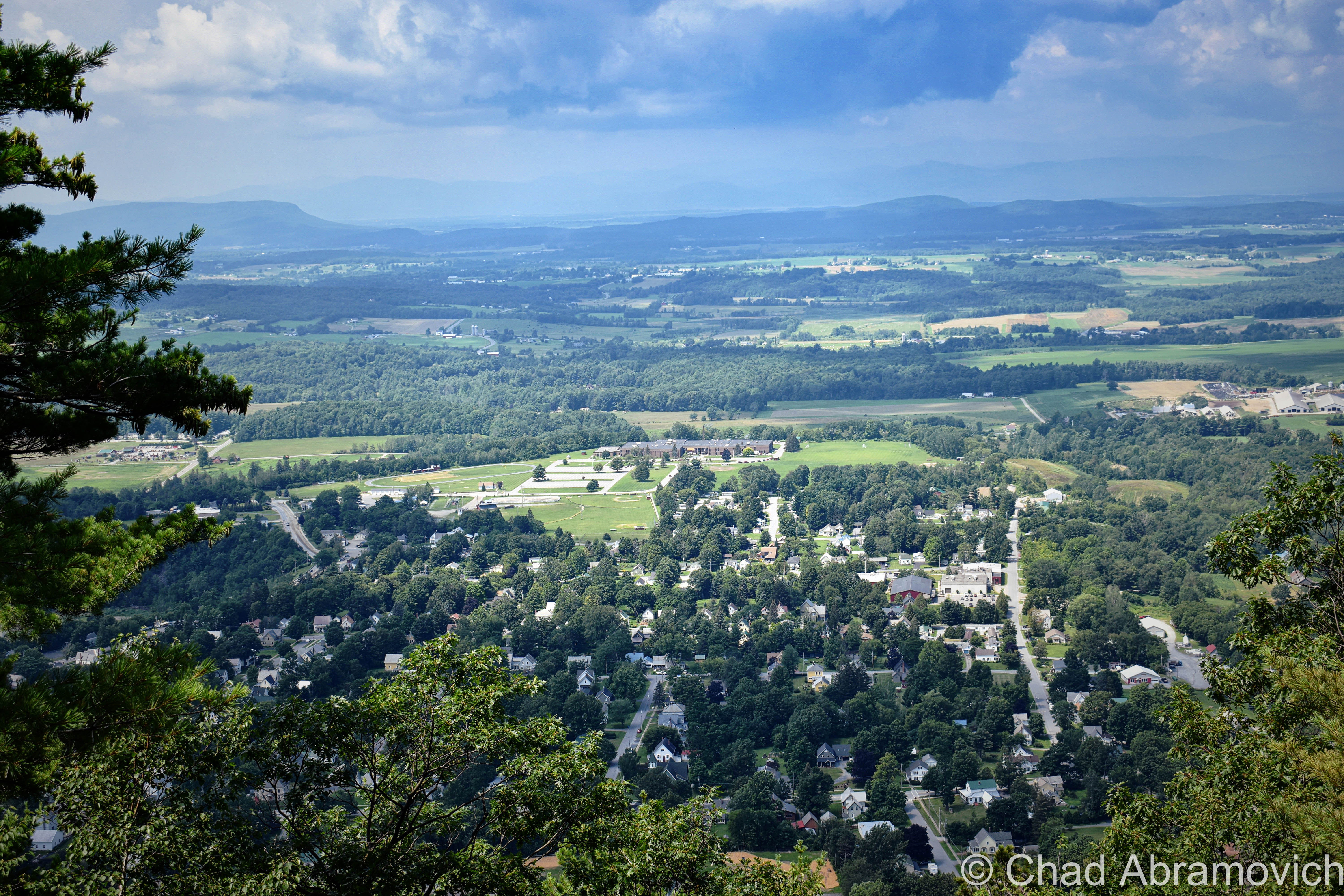
“The Money Diggers”
It was one of those first great spring days of the year where having fun sounded better than my adult responsibilities, and I set out towards Bristol with an adventure in mind. My only obstacle was how to get there, which was at least 80% of that aforementioned adventure.
My plan was to bushwhack up towards a remote and grueling area of the Bristol mountainscape spitefully called “Hell’s Half Acre” by silver miners over a century ago. An area with an incredibly gothic ledger of tales affixed to it.
There are no trails here. No signage or public access. Just a giant mountain as a general compass point, which was a huge part of this wild area’s appeal to me. With a photocopied town tax map in hand, I studied the property boundaries and saw my portal; a narrow sliver of land between two lots that was owned by the national forest. That would be my way up to a miserable elevation called South Mountain.
Parking the car off a no trafficked gravel backroad, I simply entered the woods and walked in the direction of the mountain. I knew as long as I was going up, I was technically going in the direction I wanted.
My feet began finding numerous pine needle covered holes in the ground that are easy to slip into while walking, and roll an ankle if you’re lucky. Others are more unfortunate I suppose, and leave with broken limbs.
Eventually, the topical Quartzite rock slide loomed before me as I trekked through the budding woods in bloom, as the sun was already baking their chalky white surfaces. Undoubtedly, this is some of the most inhospitable land in Vermont.
The rocks were still retaining some of their winter moisture and snow runoff and were surprisingly damp and cool underneath where the sun couldn’t reach. It was a surreal world up there on those slopes. I could only imagine what the miners of yesteryear had to endure here. Some of the old shafts were still visible underneath toppled boulders and through drifts of decomposing leaves and pine needles, but were far too dangerous to venture down into without more planning on my part. And alas, no silver to be found.
What’s this about silver? This formidable landscape of boulders is where Vermont’s most well-known treasure tale once conspired a few centuries ago, and is practically a ghost of an occurrence nowadays that can barely be traced with a bit of optimistic scrutiny.
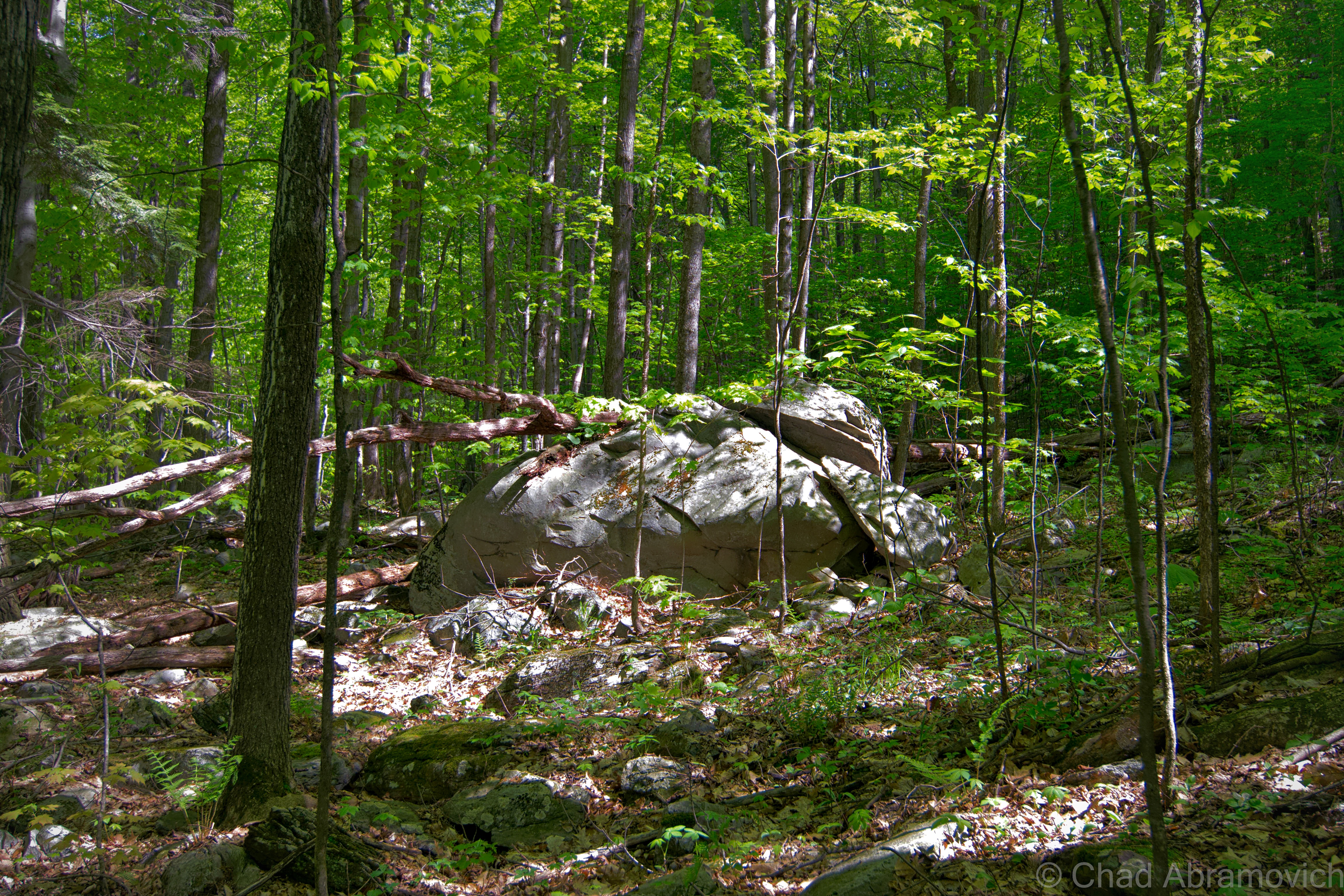
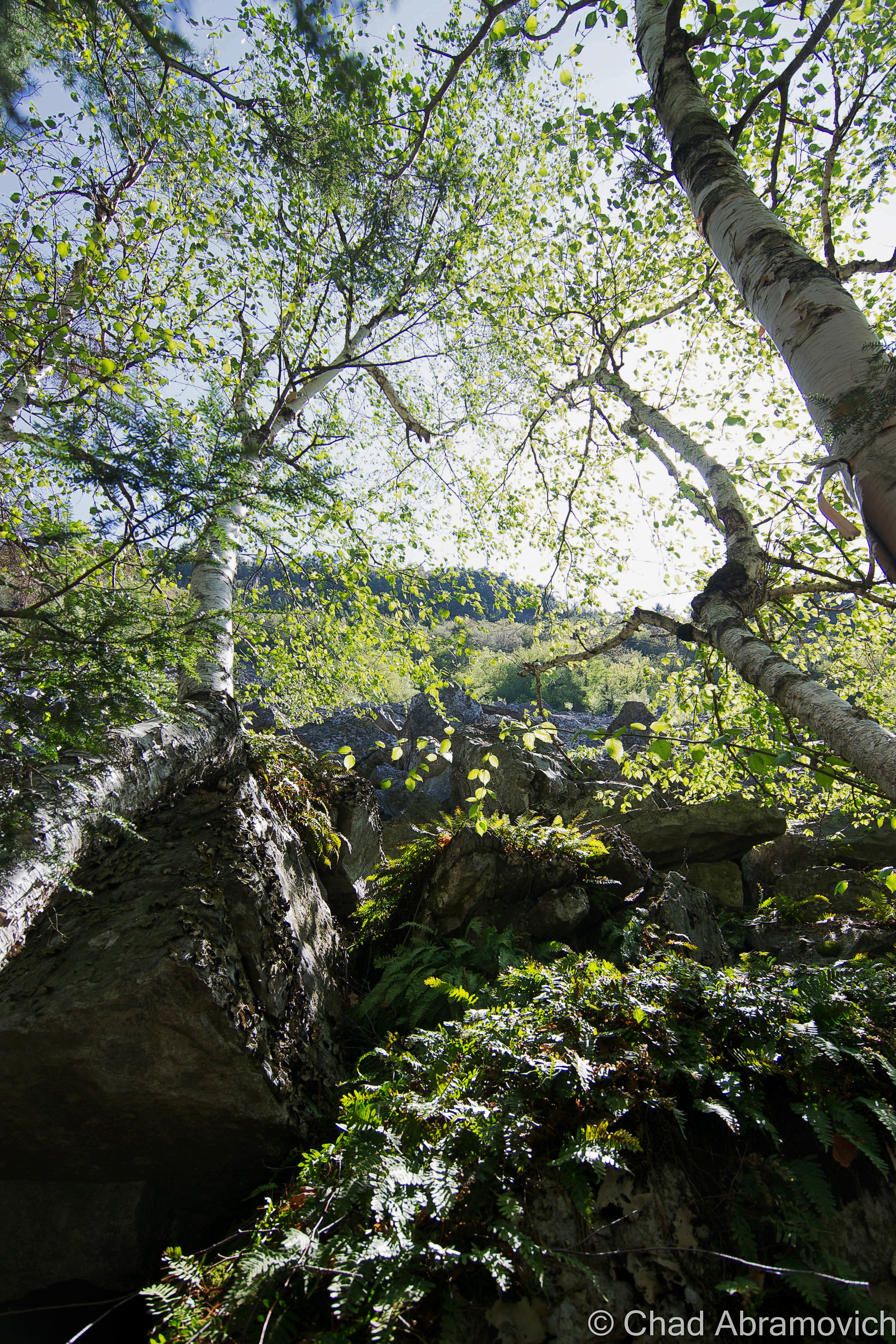
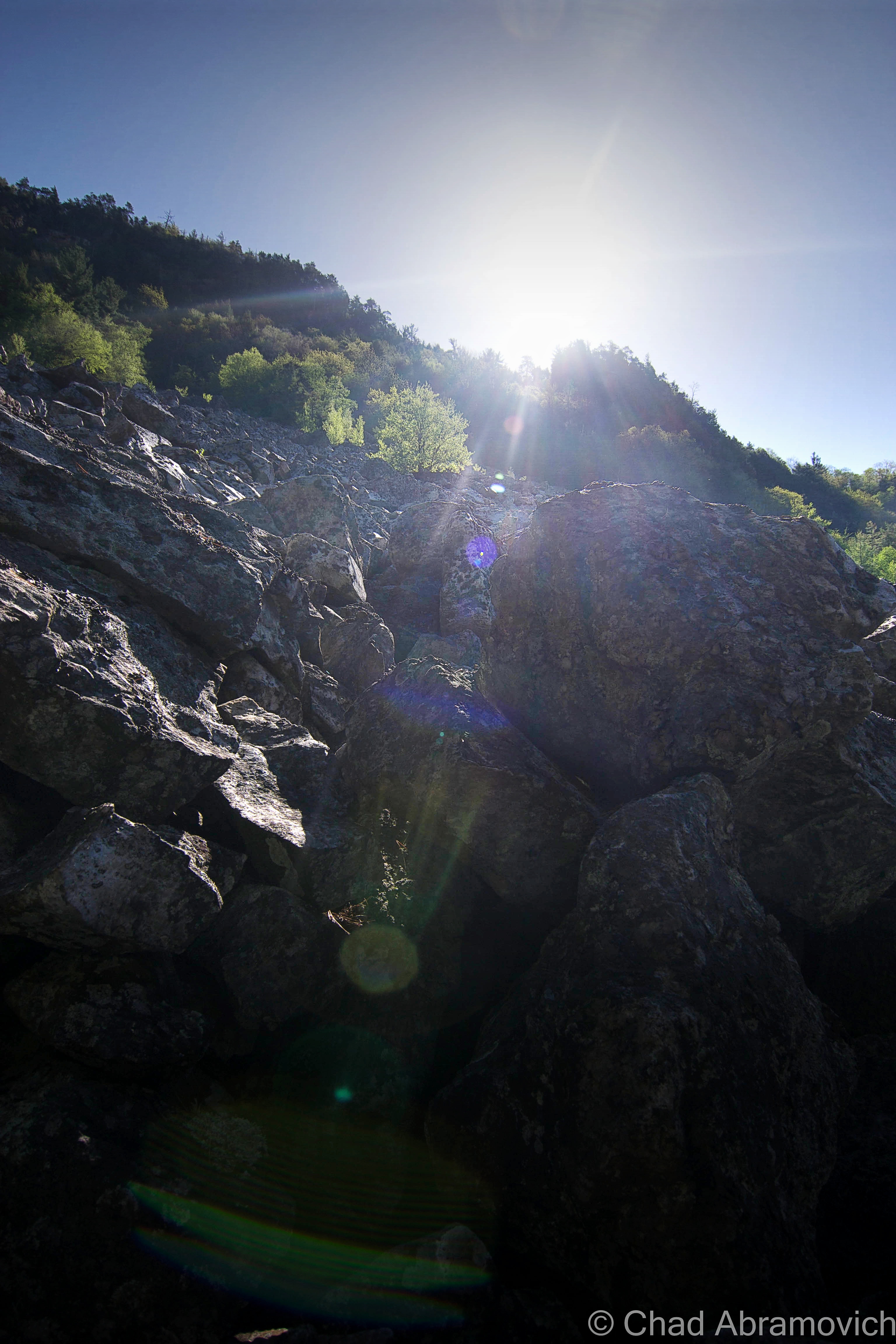
For a landlocked state, I was surprised and pleased to hear that Vermont had quite a few buried treasure stories through years of folklore research. And a rough area south of Bristol village seemed to be Vermont’s most notorious and alluring. Mostly because this one enticingly remains unclaimed under inexplicable circumstances- if it ever existed to begin with.
Could there still be a huge load of unclaimed silver up there waiting to be uncovered by a passing woods person? Clambering my way around the dark holes entering into the bowels of Hells’ Half Acre that validated these claims, I wanted to know more about what happened here. So I took to researching it, and it’s a terrific story, even if some of it may be nothing but fabrication. I’ll try to condense everything as best I can.
We can begin with this whole treasure hunting business with an outsider appearing in Bristol in 1800, a Spaniard named DeGrau. Because Bristol, Vermont was a small, insular town at the time, the locals took notice to a nonnative wandering into the general store to purchase mining supplies, of all things. He kept to himself, never asked for any favors, and didn’t hang around long enough to socialize.
But it wasn’t until bewildered and frightened kids began telling their parents that a strange gentleman had been threatening them in some unfamiliar tongue when they were playing up South Mountain. They had heard some strange clout and other noises and when they went to investigate, they ran into him and he chased them off. The description matched the fellow folks saw in the general store.
His violent attitude and secretive demeanor was all the reason fathers and older brothers needed to form an angry mob. They armed themselves and marched up onto the mountain with two clear choices for the man; explain his business here, or get driven out of town. Or, maybe both if he was really unlucky.
There, they heard the collision of metal against rock – the same noises that attracted their kids before – and creating the noise was the oddly dressed Spaniard who was already out of place in the hardscrabble Bristol of the 19th century. The mob surrounded him and gave him their ultimatum.
Seeing no other way out, he dropped his ax and exhaustively told his accusers that his name was DeGrau, and proceeded to enlighten the curious group with quite the tale.
Many years ago, his father, who was a miner, traveled the area with a group of Spanish explorers in search of precious metals and they found a rich vein of silver near the area he was digging, when Bristol was nothing more than a crude collection of cabins called Pocock.
They procured the mining equipment and a larger crew and began operations. Almost immediately, they found great success – the ore was rich and easily smelted into silver bars. They mined throughout the summer and into the fall and when they were ready to leave, they found that they couldn’t carry everything back with them – they had too much! So, they hid the remaining silver in a cave and hid the entrance. They all agreed they would come back for the rest of the silver, on the condition that they would have to be together. But, complications prevented them from coming back, until years later when DeGrau, who was now a very old man, was the only survivor of the original group.
The residents of Bristol not only believed his tale – they were fascinated by it! But there was a problem. DeGrau couldn’t find the treasure, the mountain looked different now, he didn’t remember where the cave was. It was probably covered by some rock slide that is the trademark feature of this unforgiving landmass. But, the locals who were now doing some scouting of their own, were able to find evidence of old mining operations around the area, which validated his claim to them. Soon, he faded out of the picture, and eager Bristol residents took his place, digging around the base of the mountain, hoping to strike it rich.
Soon, he faded out of the picture, perhaps more grumpy and disheartened than he was before his last arrival in town, and eager Bristol residents took his place, digging around the base of the mountain, hoping to strike it rich.
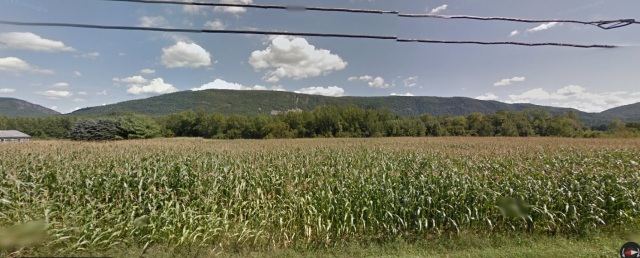
Over time, people from beyond Bristol’s borders made their way to the mountain slopes to seek their fortunes.
Small-time operations existed in the area until around 1840, when a group of Canadians lead by a mysterious “Uncle Sim” trekked down to Bristol and began more intense mining operations. Uncle Sim was said to do no work himself, but instead, would direct and control the operations in idiosyncratic ways. He was said to be very charismatic, and incredibly persuasive, which I guess most hucksters are. He raised all his investments by promising $100 returns for every dollar raised.
Instead of doing the traditional scouting and digging, which relied on methodology and wisdom, Uncle Sim had a better idea, and hired a fortune teller, a clairvoyant Calais woman named “Sleeping Lucy” Ainsworth, Vermont’s most infamous spiritualist, to guide them and tell them where to dig mine shafts.
Stories of miners hiding behind rocks and in caves and making bear noises to scare local kids were also told. When that didn’t work, the diggers also made up terrifying folk tales about ghosts and vicious dogs that haunted the mine.
In just a half acre, they dug numerous shafts into the rocky mountain soil, some that were said to reach 50 feet down, and then travel hundreds of feet directly under the mountain. The area was honeycombed with so many shafts that were said to be miserable, dark and cold that the area was given the nickname, Hell’s Half Acre. And the name couldn’t have been more fitting.
With months of back breaking labor yielding no results, tragedy and bad luck seemed to be the only thing the ambitious crews were discovering. Mine shafts had to be abandoned due to “foul air”, flooding issues and snow drifts. More work went into reclaiming the shafts than digging them. If that wasn’t bad enough, it was hard to haul food and supplies up into the mountains, so a lot of men were close to starving after a while.
By 1852, Uncle Sim begrudgingly gave up, packed up his crew and headed back to Canada. But he was apparently a determined or foolish man, and a decade later, he returned to the site. With the aid of a new conjurer, he was assured that all he had to do was move a few rocks, and he would discover the elusive passage which contained the treasure. But his effort was shorter lived than his first one. An old man by now, he eventually swallowed the taste of defeat and left Bristol, vanishing into obscurity.
A few other attempts at mining were made throughout the years, but no success ever came out of it, and as far as we know, there is a large treasure of silver still waiting somewhere within the foul depths of Hells’ Half Acre.
Is There Truth Here?
I’m not sure now, after researching this intriguing series of events more closely.
The problem here is that silver isn’t native to Vermont, according to the state geologist- and the idea of Spanish parties trekking down through the out of the way wilds of Vermont’s green mountains and finding veins of silver here is a little, well, unbelievable, considering they really had no reason to be here during that time frame. Unless of course, that silver was brought here and stashed for safe keeping that was all too successful? More interestingly, a few other Vermont towns have their own treasure tales, which are pretty similar to this one. But they all happen to be inspired by Silver, as opposed to Gold, which can be found in Vermont.
About the one thing I can confirm without a doubt is that the mining attempts did happen, and we have the old mine shafts and odds and ends still found underneath loads of pine needles on the forest floor to prove it.
Even the ubiquitously used term “Money Diggers” is a misnomer. They weren’t digging for money, but rather, a precious metal. At least they thought they were.
And “Uncle Sim” was real too. In a few additions of the defunct Bristol Herald, printed circa 1888-89, newspaper writer Franklin S. Harvey recalled personal accounts of a run in with him in 1860, when Uncle Sim was at that point, a feeble old man. The sight of him digging around the rocks and cliffs looking for that silver was apparently so pitiful, that Harvey forgave him for jumping out behind rocks and making bear noises that scared him so badly when he was a kid investigating the diggings for himself. Harvey even claimed to speak with reliable Bristol old-timers who still remembered DeGrau, so we know he was real too. But the fact DeGrau dug and labored and found nothing also brings a little flimsiness to the story. Later on, Harvey’s accounts were collected into a now out of print book called The Money Diggers.
The venerable Joseph Citro thinks that the story may be bunk, and brought forth some great validating research on this story. Through Citro’s research, he uncovered an interesting thought by New England folklorist and historian Edward Rowe Snow, who speculated that the silver may have found its way into Vermont because of the plundering of a distressed ship off the coast of New London, Connecticut.
In November of 1752, the Spanish ship Spanish ship Santa Elena y Senor San Joseph was on it’s way from Hondorous to Spain. Its hold was loaded with at least 40 chests filled with silver. But on November 24th, the vessel ran into some trouble at sea and was forced to dip in towards New London where it anchored. It should have been a straightforward repair if the requests for aid weren’t met by thievery instead. Most of that silver somehow vanished while in port, and the whereabouts are a mystery that probably will never be solved. Maybe the stolen loot somehow found its way up into the far-flung wilds of Vermont to be stashed, or maybe the party was on their way to Canada. Maybe. If that’s the case, what about the other Vermont towns and their similar treasure tales?
Another theory is that the local Indians may have put it there, but that also lacks validation.
Ghastly Tales
I guess the laws of buried treasure state that when you have one, you also have the supernatural. In Bristol’s instance, a ghost or two.
The original and more morbid of the tales is that when the mysterious Spanish prospectors were mining the base of South Mountain, they sacrificed a local boy and his dog under the moon, its light burning their blood on the stark white boulders. I guess it’s no secret that avarice brings out the worst in people and our monsters often say the most about humanity.
Anyways, this grim act was supposed to supernaturally bound the boy to protect the mine for all eternity, shambling through the shadowy woodlands around tree stumps and near caves, with a smoldering hot branding iron and a frightful gash across his throat, chasing away anyone who gets too close to the fabled mine. His dog turned hell hound is said to join him, growling and threatening to tear the throats out of anyone who ventures too close. Strangely enough, Harvey once wrote that some of those miners, who were gray-haired, aged men, actually admitted to hearing weird howls and groans at dusk.
The more modern version turns the boy and his dog into sympathetic figures. One fall afternoon, a boy and his dog went hiking in the woods around Hell’s Half Acre, exploring the abandoned mines and cavities and rotting wooden platforms. And perhaps maybe, something flickered in the back of the boy’s mind as he continued with his dog, something about a lost fortune of silver that was never found…
But as night fell, they never came home. His worried parents soon launched a search party, and plenty of neighbors and volunteers combed the woods and found nothing. After weeks of searching, they reluctantly gave up, and the cold Vermont winter rolled in. The next spring, a passing woodsman was walking through the woods, when he noticed something peculiar at the edge of a mine shaft. As he got closer, he recognized it as the skeleton of a dog. Then it clicked. If he was looking at the remains of a dog, sure enough, that vanished boy had to be nearby.
At the bottom of the 50-foot shaft, the skeleton of a little boy was found. The boy had fallen into the mine shaft and broken both his legs, unable to get out, he starved to death. His faithful dog refused to leave his side, and died at the edge of the hole. And then, supernature happened.
For years after, and maybe even today, folks up around Bristol Notch would say that when the weather was just right on certain nights, they could hear something coming through the woods. Something that may have sounded somewhat like a lonely cry for help.
Regardless if any of this is true or not, it was a great area to bushwhack up to none the less, and the landscape, which is strangely alien and dangerous, makes for a great elixir for your imagination.
Sources:
There was some great material to aid my research here; including:
The Money Diggers by Stephen Greene ( in the compilation book; Mischief in the Mountains)
Green Mountains, Dark Tales by Joseph Citro
The Money Diggers, by Franklin Harvey
—————————————————————————————————————————————–
To all of my amazing fans and supporters, I am truly grateful and humbled by all of the support and donations through out the years that have kept Obscure Vermont up and running.
As you all know I spend countless hours researching, writing, and traveling to produce and sustain this blog. Obscure Vermont is funded entirely on generous donations that you the wonderful viewers and supporters have made. Expenses range from internet fees to host the blog, to investing in research materials, to traveling expenses. Also, donations help keep me current with my photography gear, computer, and computer software so that I can deliver the best quality possible.
If you value, appreciate, and enjoy reading about my adventures please consider making a donation to my new Gofundme account or Paypal. Any donation would not only be greatly appreciated and help keep this blog going, it would also keep me doing what I love. Thank you!
Gofundme: https://www.gofundme.com/b5jp97d4


